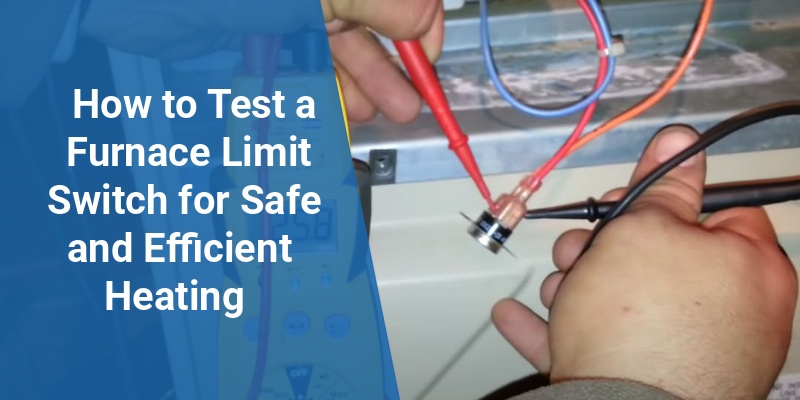Ensuring your furnace operates safely and efficiently involves understanding critical components like the furnace limit switch. This small but essential part helps prevent overheating by shutting off the heat when the furnace reaches a dangerous temperature. Testing a furnace limit switch is a vital maintenance step for homeowners and HVAC professionals to avoid costly repairs or hazards. This article outlines precise methods to check a furnace limit switch, interpret test results, and know when replacement is necessary.
| Aspect | Description |
|---|---|
| What Is a Furnace Limit Switch? | A safety device that turns off the burner if the furnace overheats |
| Common Symptoms | Frequent furnace shut-offs, uneven heating, blower issues |
| Testing Tools Needed | Multimeter, screwdriver, and protective gloves |
| Testing Methods | Continuity test, visual inspection, functional test |
| When to Replace | If the switch fails continuity tests or shows physical damage |
What Is a Furnace Limit Switch and Why Is It Important?
A furnace limit switch protects your heating system by preventing overheating. It monitors the temperature inside the furnace and automatically shuts down the burner if temperatures exceed safe limits. This action protects internal components, prevents fire hazards, and ensures consistent performance.
Located near the heat exchanger, the limit switch plays a critical safety role. Without it, the furnace could run dangerously hot, causing damage to the system or your home. For that reason, regular checks and tests of the limit switch are essential for maintaining furnace safety and efficiency.
Signs That Indicate a Furnace Limit Switch Needs Testing
Recognizing symptoms can prompt timely furnace limit switch testing. Common indicators include:
- Furnace cycles on and off rapidly (short cycling)
- Uneven heating throughout the home
- Burner fails to ignite or stays on continuously
- Blower fan runs longer than usual
- Burner or furnace overheating alerts
Noticing these issues means the limit switch may not be functioning correctly. Testing helps determine whether the switch or another component is causing these malfunctions.
Tools and Safety Precautions for Testing a Furnace Limit Switch
Before testing, gather essential tools: a digital multimeter, screwdriver set, and protective gloves to handle electronic components safely. Turn off power and gas supplies to the furnace to avoid electrical shocks or gas leaks.
Ensure you follow manufacturer-specific safety guidelines. If uncertain about any step, consult an HVAC professional to prevent injury or damage.
Call 888-906-9139 for Free Local HVAC Quotes – No Obligation, Just Savings!
Step-by-Step Guide to Testing a Furnace Limit Switch
1. Locate the Limit Switch
Typically found on the furnace’s blower compartment or near the heat exchanger, the limit switch will have wires connected to it. Remove the furnace access panel to reach it.
2. Perform a Visual Inspection
Check for obvious signs of damage, corrosion, or soot buildup on the switch and wires. Damaged components often indicate the need for replacement.
3. Disconnect the Switch
Carefully disconnect the wiring harness from the limit switch terminals while noting wire placement for reconnection.
4. Set Up the Multimeter
Turn the multimeter to the continuity or ohms setting. Continuity testing will show if electrical current can pass through the switch effectively.
5. Test for Continuity
Place the multimeter probes on the switch terminals. A continuous beep or reading close to zero ohms indicates the switch is functional. If no beep or infinite resistance shows, the switch is open and defective.
6. Check Switch Function at Normal and Trigger Temperatures (Optional)
Advanced testing may involve gently heating the switch to its trip temperature to verify it opens as expected, simulating furnace overheating conditions.
Interpreting the Results of the Limit Switch Test
A working furnace limit switch will have continuity at normal room temperature, allowing current flow. When heated to its cutoff point, continuity breaks, opening the circuit and shutting off the burner. A permanently open or closed circuit indicates failure.
Call 888-906-9139 for Free Local HVAC Quotes – No Obligation, Just Savings!
If testing reveals no continuity at room temperature, the switch is faulty and must be replaced. A fuse or switch stuck closed poses safety risks and should also be replaced immediately.
Common Types of Furnace Limit Switches
| Type | Description | Typical Application |
|---|---|---|
| Manual Reset Limit Switch | Stops the furnace and requires manual reset once it trips | Older furnaces; critical safety backup |
| Automatic Reset Limit Switch | Resets automatically when temperature drops | Modern furnaces for smoother operation |
| Fan Limit Switch | Controls blower operation based on temperature | Maintains airflow timing |
When to Replace Your Furnace Limit Switch
A limit switch should be replaced if:
- Continuity tests fail consistently
- Physical damage or corrosion is present
- The furnace continues to overheat after testing
- It repeatedly trips without apparent cause
Using a reliable replacement switch compatible with your furnace model is vital. Installation by a certified HVAC technician is recommended to ensure correct wiring and function.
Maintaining Your Furnace Limit Switch for Longevity
Routine furnace maintenance helps avoid limit switch failure. Key tips include:
- Regularly clean furnace interior to reduce dirt buildup
- Inspect wiring for signs of wear or corrosion
- Schedule annual professional furnace inspections
- Check and replace air filters frequently to ensure airflow
These steps minimize strain on the limit switch and other components, enhancing system safety and efficiency.
Additional Troubleshooting Tips for Furnace Limit Switch Issues
If the furnace limit switch tests fine but problems persist, consider:
- Testing the blower fan to ensure proper operation
- Checking for clogged vents or dirty filters causing airflow restriction
- Examining the heat exchanger for cracks or blockages
- Looking at the thermostat calibration and settings
Addressing these related issues can restore furnace performance if the limit switch is not the cause.
Call 888-906-9139 for Free Local HVAC Quotes – No Obligation, Just Savings!
